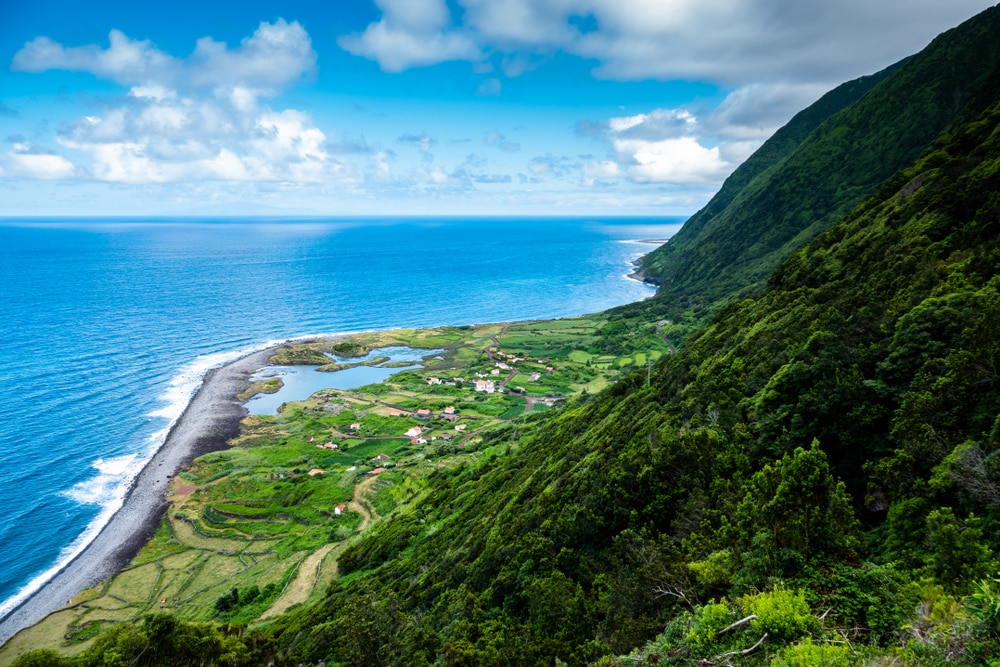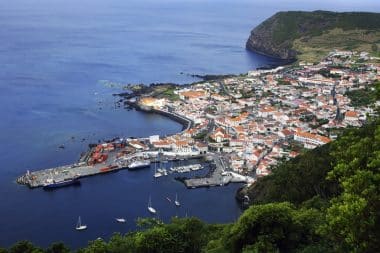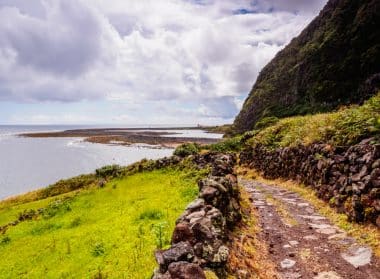
Those who fly to the archipelago of the Azores , which is part of Portugal, usually visit several islands. Under no circumstances should you miss the almost 234 square kilometre island of São Jorge, which would be called Saint George in English. Once upon a time, apart from local guests, it was mainly surfers who got lost here. This is no wonder, because São Jorge has breathtaking cliffs where rough waves crash. For experienced surfers, the island’s beaches continue to be a true paradise. In the meantime, hikers and nature lovers are also attracted to São Jorge. There are some exciting volcanoes to climb. In addition, São Jorge captivates with enchanted-looking mountain villages, some of which can only be reached on foot even in the 21st century. The ideal place for all those who want a mixture of relaxing idleness and an active holiday in the best climatic conditions.
Climate and the best time to visit São Jorge
As in the other Azores islands, São Jorge has a subtropical oceanic climate that always remains stable. The seasons blur here and a difference between summer and winter is hardly noticeable. Between June and October, temperatures reach around 25 degrees. In winter, they hardly fall below 17 degrees. However, since rough winds blowing from the Atlantic are to be expected, storms can occur in winter that thwart one or the other hiking adventure. So if you want to be on the safe side in terms of weather, visit São Jorge between spring and autumn. Then the beaches of the island also invite you to swim without having to fear heat stroke.
A visit to the island’s capital Velas

The island’s capital, Velas, is located in the southwest of the 53.5-kilometre-long island. With almost 2,000 inhabitants, almost a quarter of the island’s population lives here. Velas is the administrative center of São Jorge, but it seems clear and a little sleepy. You don’t need a car here, because due to the tight dimensions of the city, everything is within easy walking distance. The town centre is formed by stately buildings in the Portuguese style. Visitors often reach the island of São Jorge at the ferry port of Velas. From there you walk directly to the Igreja Matriz de Velas church on the main square.
There is also the Museu de Arte Sacra, which deals with local church art. Outside the town centre, the Piscina Natural da Poço dos Frades is well worth seeing. This is a naturally formed rock arch directly by the sea. If you then climb the Miradouro das Velas viewpoint, you have a wonderful view of Velas and the sun rising or setting over the Atlantic, especially in the morning or evening hours. Romantic hours are guaranteed here.
The Fajãs of São Jorge
The fajãs of São Jorge are unique. Fajãs are fertile coastal plains that owe their existence to previous lava flows or landslides. The island has about 75 fajãs to date. Fajãs are characteristically difficult to access and are often a little hidden. But that’s exactly what makes them perfect hiking destinations. The locals have used the fertile fajãs since time immemorial to grow crops, coffee, oranges or bananas. Sometimes only one family settled near a fajã, sometimes a small village was built there.
Many fajãs are still farmed today, although the younger generation is increasingly turning their backs on the arduous life of the fajãs farmers. So if you want to gain an insight into traditional life on São Jorge, you should definitely visit some of the Fajãs on foot. The views from the edges of the Fajãs are also spectacular, as they are located near the cliffs of the island.
Hiking on the Grand Route of São Jorge and other trails

If you want to make a real hiking holiday out of your stay on São Jorge, you can actually hike half the island on the Great Route of São Jorge, over a distance of 41.5 kilometers. The well-flagged hiking route is considered challenging and can be completed in two or three days – depending on your pace and fitness level. On the way, it goes up and down constantly, up to the 1,053-meter-high Pico da Esperança, which is the highest mountain on the island. Like all of São Jorge, it is of volcanic origin. When the weather is nice, the surrounding Azores islands of Pico, Faial and Graciosa can be seen from the crater top of Pico da Esperança. Alternatively, you can also reach Pico da Esperança via several other hiking trails. The ascent to the 1,019-metre-high Morro Pelado is also worthwhile.
A sea of leisure activities
Tourists who don’t like hiking, or simply want a little variety, can also explore the volcanic island by mountain bike. There are numerous routes of all levels of difficulty. Around Urzelina, climbing enthusiasts meet in a natural rocky landscape. Near the towns of Montoso and Bocas do Fogo, speleologists get their money’s worth. In addition, a lot of different bird species settle on the island, which you can constantly encounter during all activities. Thus, São Jorge is the perfect holiday destination for all bird lovers. After all the efforts, you should enjoy the culinary delights of the island. The freshly caught seafood and locally grown coffee are outstanding. In addition, São Jorge is famous for its cheese, which is produced in many variations.

